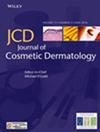Treatment of Solar Lentigines: A Systematic Review of Clinical Trials
Abstract
Background
Solar lentigines, resulting from chronic UV exposure, are early signs of photoaging and can significantly affect individuals.
Aims
This systematic review evaluates the efficacy, safety, and tolerability of treatments for solar lentigines in light of a lack of conclusive evidence regarding optimal therapy options.
Methods
A systematic search of PubMed/Medline, EMBASE, Cochrane Library, and clinicaltrials.gov was conducted to identify relevant clinical trials published up to December 7, 2023. Inclusion criteria encompassed studies with patients diagnosed with solar lentigines, employing clinical trial methodologies and reporting clinical outcomes. Study quality was assessed using the Cochrane tool.
Results
Forty-one clinical trials involving 3234 patients aged 24–92 years were included. The most common effective topical treatment was a combination of mequinol 2% and tretinoin 0.01%, achieving efficacy rates between 52.6% and over 80%, particularly for facial lesions. Laser therapies demonstrated promising results: pulsed dye laser (27%–57% success), intense pulsed light (74.6%–90%), Q-Switched laser (36.36%–76.6%), picosecond laser (67.9%–93.02%), and fractional CO2 laser (8%–23%). Cryotherapy yielded success in 37%–71.4%, while chemical peels with trichloroacetic acid achieved 12%–46%. Most adverse events were mild and transient, with local irritation from topical agents and mild pain from therapies being common. Pulsed dye and intense pulsed light lasers were less associated with post-inflammatory hyperpigmentation, whereas cryotherapy was linked to more severe side effects.
Conclusions
Laser therapy appears more effective than other modalities, with an acceptable safety profile. Combining lasers with specific topical agents may further improve outcomes and reduce PIH. However, additional large-scale randomized trials are required to confirm these findings.


 求助内容:
求助内容: 应助结果提醒方式:
应助结果提醒方式:


